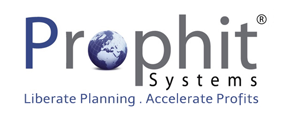DO YOU UNDERSTAND THE WEAKNESSES IN YOUR SUPPLY CHAIN?

As a SCM solutions provider we understand that there are an infinite number of variables that influence a supply chain’s efficacy. This fact can make identifying the true culprit of a supply chain failure incredibly difficult. In many cases when there is a catastrophic failure within a supply chain managers tend to look for direct cause and this in most cases will be identified as one or two outside forces that were beyond their control. However, what these witch hunts fail to do is look at the bigger picture and identify all the factors that contributed to a supply chain disruption.
In John Manners-Bell’s book, Supply Chain Risk, he draws parallels between the Swiss Cheese Model and supply chain management. The Swiss Cheese Model was developed by academics in the risk analysis field. The gist of the model is that factors contributing to everyday operating procedures can be present for long periods of time without showing any symptoms of contributing to a potential adverse effect. It is only once a specific set of these dormant factors come together that operating conditions will see upheaval.
“All organisations have latent conditions – on their own they do not result in catastrophic failure. However, what is required is an ‘active failure’ which, when these latent conditions align across a network or organisation triggers a disastrous event.”
John goes on to provide an example which most people managing supply chains can relate to.
Imagine a carrier carrying key components to a factory is late with its delivery. Consequently, the factory has to shut down or 24 hours, which sees millions of dollars of production lost. The most obvious culprit to this scenario is the carrier itself.
However, what if the company in question whose factory is standing dormant waiting for the parts was actively pursuing leaner manufacturing, which in turn, had seen a minimisation of inventory and safety stock? What if procurement had also minimised their cost by sourcing parts from a foreign-based supplier and an earlier shipment had been rejected due to a failed quality inspection?
What if when appointing the new supplier the new lead-times had not been accurately accounted for and the potential for something going wrong along the new delivery route hadn’t been factored into planning and forecasting models?
Now all of a sudden the carrier (and the driver responsible for the delivery who was subsequently ‘let go’) aren’t solely responsible for the loss in revenue. In this case management and the relevant systems need to own a lion’s share of the responsibility for the failure.
This reality plays a major role in how we at Prophit Systems develop and implement our offering. We focus on making the input of variables as easy and error free as possible, while making sure that triggers are in place that will alert managers of any potential future anomalies that could impact any part of the supply chain. Furthermore, our reporting tools are designed to deliver transparent insights so that the combination of factors that led to a negative outcome can be identified and addressed.
